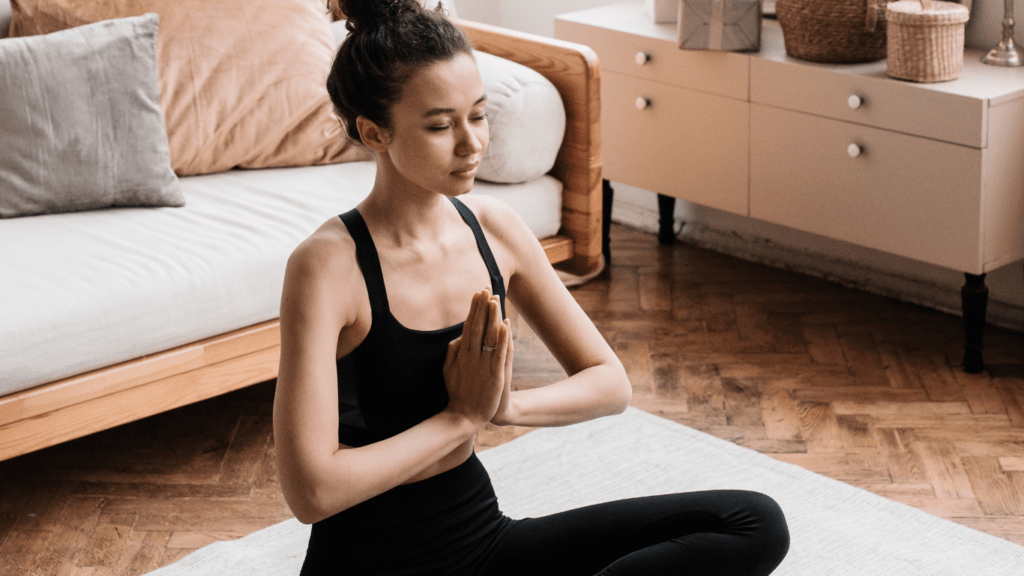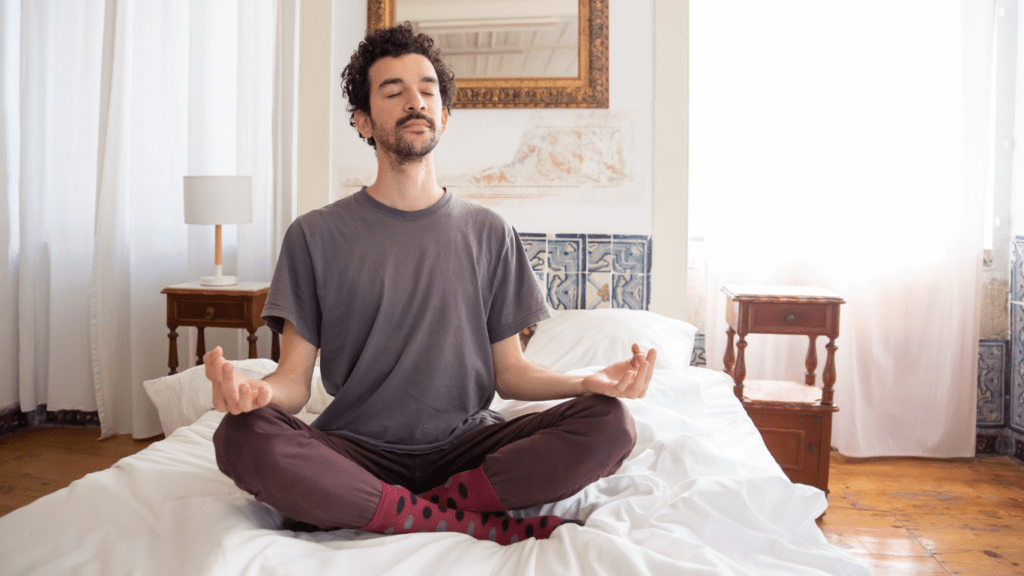Understanding Mindfulness
Mindfulness focuses on being fully present in the moment. It involves paying attention to thoughts, feelings, and surroundings without judgment. While many associate mindfulness with meditation, it extends beyond that. Walking, eating, and even breathing can become mindful activities by purposefully noticing every detail.
Mindfulness centers on awareness. It’s about recognizing the present rather than being on autopilot. For instance, when you eat, savor each bite, taste the flavors, and feel the textures.
Mindfulness benefits mental and physical health. Studies show reduced stress and improved concentration for those practicing regularly (American Psychological Association, 2012). This improved mental clarity can lead to better decisions and stronger relationships.
Benefits Of Staying Present
Staying present benefits both the mind and body in numerous ways. These advantages help improve overall well-being and daily functioning.
Improved Mental Health
Staying present significantly impacts mental health. According to the American Psychological Association, mindfulness reduces symptoms of depression and anxiety. By focusing on the present moments, I avoid dwelling on past regrets or future worries. This mental shift decreases overall stress and promotes a sense of calm.
Enhanced Focus
Being present enhances focus and concentration. A study by Harvard University found that people spend nearly 47% of their waking hours thinking about something other than what they’re doing. Practicing mindfulness helps me remain engaged in tasks, leading to better productivity and efficiency. By concentrating fully on the task at hand, I complete work more effectively and experience fewer distractions.
Better Emotional Regulation
Staying present aids emotional regulation. According to research published in the journal Emotion, mindfulness practice increases the brain’s ability to manage emotions. When I’m fully present, I become more aware of my emotional responses. This awareness allows me to respond to situations more thoughtfully, reducing impulsive reactions and improving my emotional resilience.
Simple Mindfulness Techniques For Beginners

Beginning mindfulness involves practical techniques that are easy to integrate into daily routines. Below are some straightforward methods to help you start.
Breathing Exercises
- Focusing on the breath is a foundational mindfulness technique.
- Sit comfortably, close your eyes, and inhale deeply through your nose for a count of four.
- Hold your breath for another count of four, then exhale slowly through your mouth for a count of six.
- Repeat this for five minutes, bringing your attention back to your breath if your mind starts to wander.
- This practice calms the nervous system and helps anchor you in the present moment.
Body Scan Meditation
Body scan meditation involves paying attention to different parts of your body. Lie down or sit in a comfortable position. Start at your toes and slowly move up to your head, noticing any sensations. Spend around 20-30 seconds focusing on each body part. If tension is noticed, breathe into that area and relax. This technique helps increase body awareness and reduce stress by promoting relaxation.
Mindful Walking
Mindful walking integrates movement with mindfulness. Choose a quiet place and start walking slowly. Focus on the sensation of your feet touching the ground, the movement of your legs, and your breathing. Notice the sights, sounds, and smells around you without judgment. Practicing for 10-15 minutes can help you stay present and fully experience your surroundings.
Incorporating Mindfulness Into Daily Life
Mindfulness can seamlessly fit into various aspects of daily life. Adopting simple practices can lead to significant mental and physical benefits.
Developing A Mindfulness Routine
Establishing a daily mindfulness routine simplifies the process of incorporating mindfulness. Start each day with five minutes of deep breathing exercises to set a calm tone. During lunch breaks, take a few minutes for a quick body scan meditation. End the day with reflective journaling to acknowledge thoughts and feelings. Consistency is key to forming a sustainable practice.
Using Mindfulness Apps
Mindfulness apps provide guided meditations, reminders, and tracking features for mindfulness activities. Popular apps like:
- Headspace
- Calm
- Insight Timer
support beginners with structured programs. These apps offer varied content, from short sessions perfect for breaks to longer ones for in-depth practice. Utilizing these tools makes mindfulness accessible anytime, anywhere.
Mindful Eating
Practicing mindful eating involves paying full attention to the eating experience. Focus on each bite, savoring the flavors, textures, and aromas. Avoid distractions like screens to remain present. Chew slowly and appreciate the nourishment food provides. This approach to eating not only enhances the sensory experience but also promotes better digestion and healthy eating habits.
Common Challenges And Solutions
Staying present presents unique challenges, especially for beginners. Here are common hurdles and practical solutions to maintain mindfulness.
Dealing With Distractions
Distractions significantly hinder mindfulness practice. To counter this, I recommend creating a focused environment. Turn off notifications on devices and designate a quiet space for mindfulness exercises. Implement short, frequent practice sessions to train the mind’s focus. For example, start with 5-minute breathing exercises and gradually increase the duration.
Managing Time
Incorporating mindfulness can seem daunting with a busy schedule. I find integrating mindfulness into daily activities effective. Instead of carving out extra time, combine mindfulness with existing routines like morning showers, commutes, or meal times. Consistency, rather than duration, enhances effectiveness, making it easier to sustain practice.
Overcoming Frustration
Frustration often arises when progress seems slow or when the mind wanders frequently. Acknowledge these feelings without judgment. I suggest viewing each instance of distraction as a learning opportunity. Return to the present moment gently and appreciate incremental progress. Using mindfulness apps can provide guided support and structure, easing frustration and keeping practice on track.
By addressing these challenges, beginners can build a resilient mindfulness practice and reap its benefits effectively.



 Hiking Trail Guide Expert & Outdoor Adventure Curator
Keturaha Perrymaners is an experienced trail guide and hiking enthusiast with an unparalleled passion for discovering and exploring nature’s most beautiful and secluded paths. As the hiking trail expert at Whisper Forest Ways, Keturaha curates comprehensive guides that cover everything from beginner-friendly walks to challenging multi-day treks. Her deep knowledge of terrain, weather patterns, and outdoor safety ensures that her recommendations cater to hikers of all levels, helping them prepare for their adventures with confidence. Whether you’re seeking scenic trails for mindfulness walks or rugged paths for a physical challenge, Keturaha’s expertly crafted guides provide the insights and inspiration you need to venture into the wilderness and fully immerse yourself in nature’s beauty.
Hiking Trail Guide Expert & Outdoor Adventure Curator
Keturaha Perrymaners is an experienced trail guide and hiking enthusiast with an unparalleled passion for discovering and exploring nature’s most beautiful and secluded paths. As the hiking trail expert at Whisper Forest Ways, Keturaha curates comprehensive guides that cover everything from beginner-friendly walks to challenging multi-day treks. Her deep knowledge of terrain, weather patterns, and outdoor safety ensures that her recommendations cater to hikers of all levels, helping them prepare for their adventures with confidence. Whether you’re seeking scenic trails for mindfulness walks or rugged paths for a physical challenge, Keturaha’s expertly crafted guides provide the insights and inspiration you need to venture into the wilderness and fully immerse yourself in nature’s beauty.
